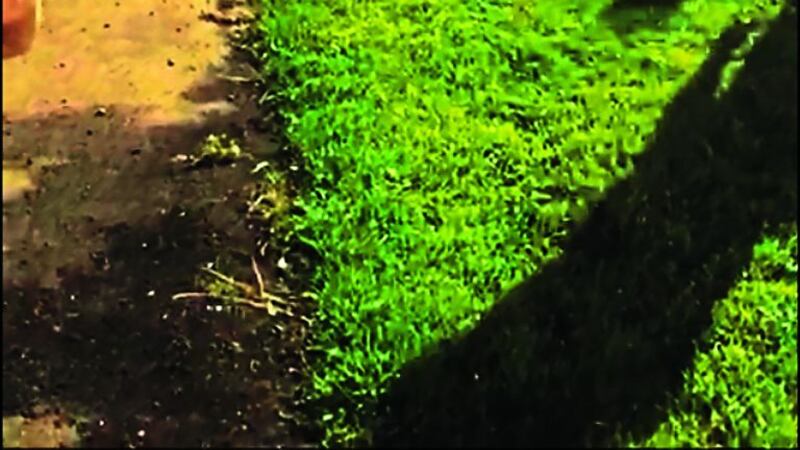EVERYONE remembers their first row on the football pitch.
Ours was at U12 against Claudy. They won the football but we’d a few big lads and held our own in the boxing.
It wasn’t treated as a big deal. I certainly don’t recall any punishment coming our way.
There’s a fair chance that, given the omerta culture, the referee didn’t even report an incident.
There were a few other scrapes down the years. After one senior match a few years ago, I had to take my brother to Altnagelvin Hospital after he had his ear bitten when an opposing player came at him from behind in a melee.
That was the worst of them. I remember flying off the handle at the referee after the match when he said he couldn’t report it as a bite.
In his report he put: “A Drum player told me he had been bit,” which was so weak when it came to punishing the offender that it might as well not have been reported.
The other player got eight weeks, but unsurprisingly he subsequently won his appeal and got no ban.
I can honestly say that in more than two decades I never hit anyone on a football pitch, and I actually only received one punch and one attempted eye gouge.
There isn’t a club in Ireland that it hasn’t happened to.
Sometimes it’s your fault, sometimes it’s a shared blame and sometimes you get drawn in out of self-defence.
Rows have always been part of Gaelic football.
As the years have passed, they have perhaps become less frequent.
That, in part, has led to the magnification of those that do occur. Camera phones have done the rest of that job.
Over the last few weeks alone we’ve seen a variety of incidents from around Ulster.
The fact that technology has been landed with a portion of the blame, with some on social media blaming those who record on-pitch fighting for highlighting it rather than condemning the actual perpetrators, offers a look through the keyhole at the mindset that exists.
It’s a mindset that would prevail in almost every club. It’s all well calling for the gates of the slaughterhouse to be opened until it’s yourself standing at them.
Nobody’s any different. Everything’s a disgrace until it happens inside your own house, and then it’s a case of ‘say nothing to nobody’.
None of it is acceptable, none of it is right, but there are very few people who ever set foot on a football pitch who are in a position for moralising when it happens to someone else.
That doesn’t change the fact that the general attitude towards violence on the football pitch has to change.
It’s all fed by the culture of using the language of war when it comes to football. We talk about dying on the ball, kill or be killed, standing up and fighting for the crest on your chest.
The changing room is slowly evolving beyond that in terms of teams now being so much more focussed on ‘the process’, and the idea that discipline is king.
While Slaughtneil have been among those hauled over the public coals in the last week, no-one should forget that their footballers had just two red cards in the last four years, one of which was rescinded. That discipline was a huge part of their success.
The ease with which rows can be publicised suggests that they’re happening with greater regularity, when everything else points to them happening less and less.
But even once is too often.
Because as time has gone on, awareness has continued to rise of the danger of a single punch.
It’s not sensationalist to suggest that if we continue to see violent scenes, then the day is coming when we will see someone killed on a football pitch.
Players now do so much work in the gym. Despite the impression being that we are a sedentary generation, the average club player now carries a much greater force in his fists than in the past.
The culture continues to pervade because it’s allowed to. The GAA’s disciplinary structures are something that this column has touched on heavily in the past, and which cannot escape the spotlight when it comes to this.
Anything above the minimum one-match ban for anyone involved in an on-field scrap won’t stick.
The lawyers will rip it to shreds and by the end of it, CCCs will be lucky if a one-match suspension even holds.
In the past week, there have been a number of alterations put forward for consideration with regards to changing the rules of Gaelic football, but all of them relating to the game’s aesthetics.
A no-tolerance approach to endangering an opponent by virtue of using your fists or your feet on them is a more pressing matter, but one which is not treated with the same seriousness.
A one-match ban for punching or kicking someone is a long outdated punishment.
Multiply it by five or six and see what happens.
The primary argument would be that no player deserves to miss a third or more of their season for a single offence.
But when that single offence can potentially be lethal, the over-riding concern has to be allowing it to continue happening on a football pitch.
Because one punch will kill someone one of these days unless action is taken now to remove the very idea of throwing one so far from the GAA’s culture that it never comes back.









